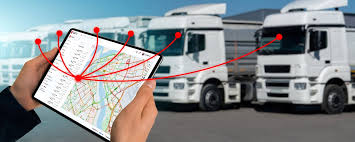What Is Smart Fleet Technology?
In today’s logistics landscape, smart fleet technology stands at the center of innovation, blending real-time data, hardware sensors, cloud software, and mobile communication to give organizations complete visibility into their transportation networks. Rather than relying solely on paper logs, manual tracking, or gut instinct, logistics professionals use sophisticated digital platforms that monitor and manage every aspect of vehicle fleets. With fleet management software, companies aren’t just tracking shipments—they’re anticipating roadblocks before they arise, optimizing the use of resources, and responding instantly to scheduling challenges.
The rapid expansion of e-commerce, on-demand delivery, and rising customer expectations has put unprecedented pressure on logistics teams. Fleet managers must ensure packages arrive on time, vehicles operate safely, and routes adapt to ever-changing conditions. Innovative fleet technology solves many of these modern pain points by connecting drivers, vehicles, and coordinators on a unified platform. As a result, businesses can streamline their operations, gain valuable insights from every mile traveled, and provide greater transparency to their end customers.
Core Features Transforming Logistics
- Real-time GPS tracking: This feature goes beyond finding vehicles on a map; it gives dispatchers and managers the precision to allocate resources dynamically, respond to traffic incidents, and make last-minute schedule changes that reduce delivery times and customer frustration.
- Telematics: By collecting thousands of data points daily, telematics systems provide a window into how each vehicle performs. Information like speed, route choices, engine diagnostics, and idle times can be tracked and used to manage costs and promote safer, more responsible driving.
- Automated maintenance alerts: Predictive maintenance is a reality, allowing companies to service vehicles before breakdowns occur. With automated alerts, fleets can fix minor issues proactively, preventing major repairs and avoiding delays caused by unexpected downtime.
- Data analytics dashboards: Logistics teams can easily sift through large volumes of data thanks to visual dashboards that highlight performance trends, spot inefficiencies, and make it simple to take corrective action before small problems become big bottlenecks.
- Instant communication tools: When drivers encounter hazards, delays, or discover new delivery instructions, instant communication with fleet coordinators ensures everyone stays aligned and responsive, significantly improving flexibility and customer experience.
How Smart Fleet Tools Benefit Businesses
For companies that rely on moving goods from place to place, adopting innovative freight is becoming necessary. According to the crucial Council, organizations using these systems consistently report lower operating costs, improved on-time performance, and higher driver satisfaction. One of the most significant financial benefits comes from more efficient routing, which reduces fuel costs—a substantial expense for any fleet. By analyzing route data and live traffic conditions, intelligent systems can minimize idle time, cut out unnecessary detours, and ensure vehicles are always on the road for the shortest, safest routes possible.
The advantages go well beyond fuel savings. Intelligent monitoring informs companies when a vehicle is being operated safely or if risky habits like hard braking need to be addressed. Automated compliance tools make it easier to stay updated with regulatory requirements, which can significantly reduce the risk of fines and liability. All these benefits combine to give companies an edge in an industry where margins are thin and every extra mile counts.
Real-World Examples of Smart Fleet Success
Real-world case studies show just how impactful innovative fleet technologies can be. For example, a mid-sized courier service implemented a comprehensive fleet management system and observed a 12% reduction in fuel usage year over year. This change didn’t just help the bottom line—it also contributed to sustainability efforts by cutting emissions. Another regional food distributor adopted real-time asset tracking and reduced the number of late deliveries by nearly a third within the first six months, directly boosting customer retention rates.
The ripple effects of these changes can be seen throughout the supply chain. Route optimization, for instance, allows companies to promise shorter delivery windows—an increasingly important differentiator for e-commerce retailers and food delivery shops. A larger third-party logistics provider cited improved driver morale and safety rates after integrating dashcams and behavior monitoring tools, reinforcing that efficiency and employee well-being advance together with the right technology in place.
Essential Data for Fleet Optimization
Data is the secret ingredient in every high-performing fleet. Logistics teams now have access to a wealth of information—often collected second by second from every vehicle—that empowers more thoughtful planning and continuous improvement. Examples of high-value metrics include:
- Trip Duration and Distance: Tracking every journey’s length and duration uncovers where delays occur and how delivery networks can be tightened up for efficiency and reliability.
- Fuel Consumption: By comparing fuel usage across routes, fleet managers can identify underperforming vehicles or drivers and offer coaching or proactively schedule maintenance.
- Driver Safety Scores: Using telematics, companies can score and incentivize safe driving habits, rewarding high-performing employees while offering training where needed.
- Maintenance Needs: By logging every service event and predicting failures, organizations can extend asset life and ensure vehicles aren’t unexpectedly sidelined.
- Fleet Utilization Rates: This data shows which vehicles are being over- or underused, helping organizations make better purchase, lease, or disposal decisions in line with business growth.
These data points, gathered and visualized through advanced analytics, unlock new opportunities to save money, reduce risk, and keep shipments traveling swiftly to their destinations.
Common Challenges and Solutions
Integrating new technology into longstanding logistics operations isn’t without its challenges. Data privacy concerns are paramount, especially as fleets handle more geolocation and personnel data. Choosing tools and software providers that prioritize data security and follow reputable industry practices is the first defense against breaches and compliance headaches.
The technical challenge of integrating innovative fleet technology with existing legacy software can also be significant. Companies that succeed often start small—perhaps with one team or region—testing and refining before a wider rollout. Proactive communication, including involving drivers, mechanics, and dispatch teams from the start, paves the way for acceptance and ensures a smoother transition to digital workflows.
Steps to Implement Smart Fleet Solutions
- Begin by evaluating your current fleet performance, identifying pain points such as recurring maintenance issues, missed delivery targets, or rising costs.
- Research software and hardware platforms that can be tailored to your unique needs and offer flexibility to grow as your business expands.
- Engage drivers, fleet managers, and IT staff in early-stage planning to identify practical concerns and secure buy-in, which improves user adoption and system effectiveness.
- Pilot new solutions within a controlled environment—such as one department or delivery zone—to troubleshoot potential issues before organization-wide implementation.
- Deliver hands-on training and ongoing support to ensure every team member understands how to use new digital tools efficiently and confidently.
- Track results and solicit feedback, using the system’s analytics to adapt and improve workflows and ensure maximum benefit from your investment.
The Future of Logistics with Smart Fleets
The next wave of logistics innovation will be powered by even more innovative technologies, such as artificial intelligence, machine learning, and high-speed wireless connectivity. Vehicles are already emerging with diagnostics and semi-autonomous features, providing more granular data and ways to optimize fleet performance. As the Internet of Things (IoT) expands, fleets can interface directly with traffic systems, shipping terminals, and customers, closing the loop between orders, shipments, and delivery verification.
Companies on the leading edge of adoption are already reaping rewards—staying ahead of competitors and offering faster, more reliable services. For those still considering the shift, there’s an undeniable momentum within the industry: data-driven logistics is not just a passing trend, but the backbone of resilient, future-proof business operations.



